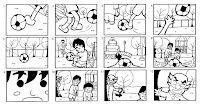Ethical Issues
 Case Study - Game Of Thrones
Case Study - Game Of Thrones 3 episodes discussed
1 episode= 15
Classification issues: strong language,sex,sexual violence,threat,gore
15 rated
13 episodes (18rated)
No flesh,muscle (allows to be rated 15)
Some things too gory and strong to be a 15 so would be qualified as an 18
A lot of stabbing
Blood, bodily organs (bloody violence) - 18
 To The Bone Research - Rated 15
To The Bone Research - Rated 15
The trailer for To The Bone, Netflix’s new film about a recovering anorexic inpatient, caused considerable controversy when it was released last month. Viewers, particularly those with experience of eating disorders, felt that its portrayal of anorexia was irresponsible – thanks to its dangerous combination of a light-hearted tone, potentially “thinspirational” imagery, and detailed depiction of calorie-counting and extreme food-avoidance behaviours; as well as for the makers’ decision to have anorexia survivor Lily Collins become severely underweight for the role. Within hours of its release, screenshots and quotes from the trailer had made their way to pro-ana thinspo blogs.
The makers responded to these criticisms by supplying their own personal experiences as evidence of their good intentions. “Having struggled with anorexia and bulimia well into my twenties,”I know first-hand the struggle, isolation and shame a person feels when they are in the grips of this illness.” Emphasising that it was important to her to be “truthful in a way that wasn’t exploitive”, she said, “My goal with the film was not to glamourise EDs, but to serve as a conversation starter about an issue that is too often clouded by secrecy and misconceptions. I hope that by casting a little light into the darkness of this disease we can achieve greater understanding and guide people to help if they need it.”
- The movie’s platform is a hopeful sign for sincere treatments of anorexia, since features tackling the subject have historically been sidelined to the schlocky genre of movies made for television. - The UK’s national eating disorder charity Beat said in a statement: “We would strongly urge anyone that might be at risk of an eating disorder to think very carefully before watching this fllm.”
- There have also been calls to ban the film because of fears the film might incite eating disorders, or make someone’s problem worse.
- Eating disorder sufferers – particularly young girls – have long been presented as especially “vulnerable” to the power of media images and messages.
-The “anorexic” is often shown as not simply vain, but also unable to separate image from “reality”.
-Research has shown that people diagnosed with anorexia are routinely presented as being “suggestively vulnerable” – that is, more likely to be influenced by media images, particularly images of (often unattainable) bodies.
-One of the key problems is that there is inadequate understanding of the social and cultural aspects of eating disorders – both in wider society and the media – as well as in the treatment of eating disorders.
-Some of the objections raised about To the Bone claim that it glamorises anorexia, and that it privileges the conventional stereotype of a young, white, fragile “waif”
-The title To the Bone suggests something about getting to the “truth” of anorexia. Such a possibility is inevitably flawed, as there are many different ways “anorexia” can be viewed, and many different experiences of having anorexia.



Really nice research constructed here Lexie, well done.
ReplyDeleteIf you were working on a short film with elderly people, what ethics would you have to take into consideration? Why?
Miss C
Conducted*
DeleteThank you- if i were working on a short film with elderly people you would have to take into consideration the breaks given as they are very vulnerable and fragile so need to take into consideration their working timings.
Delete